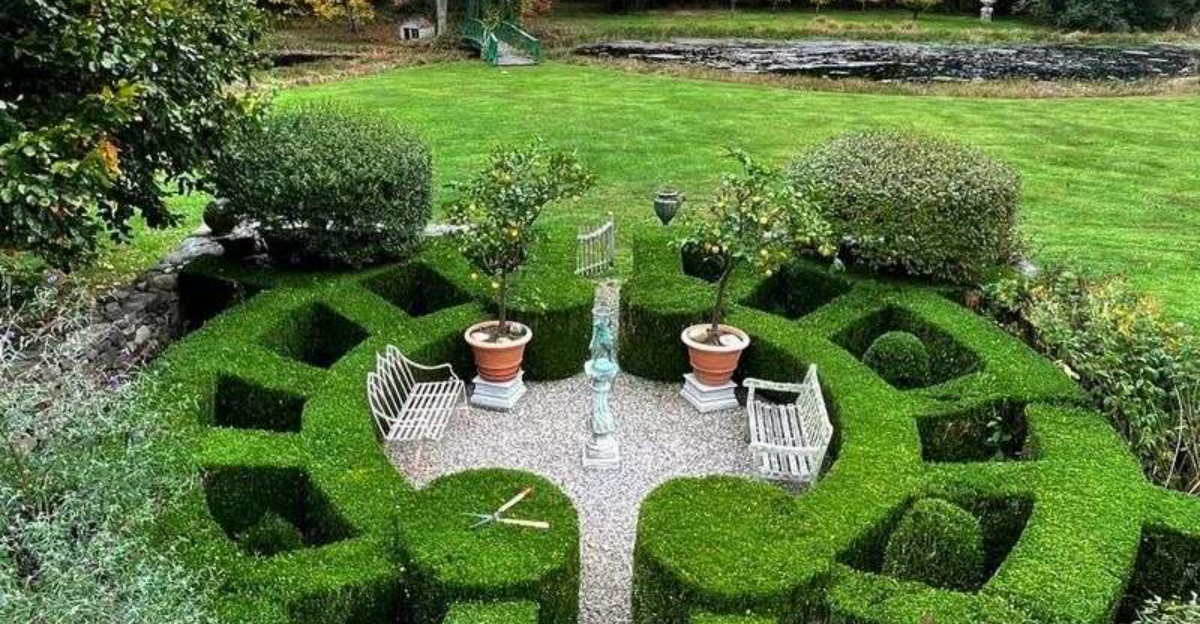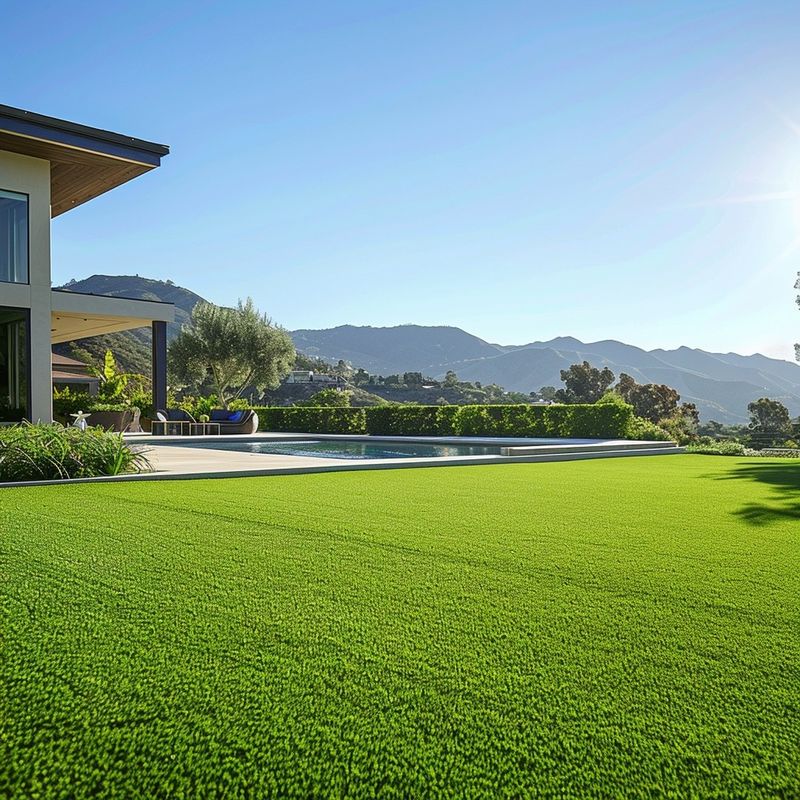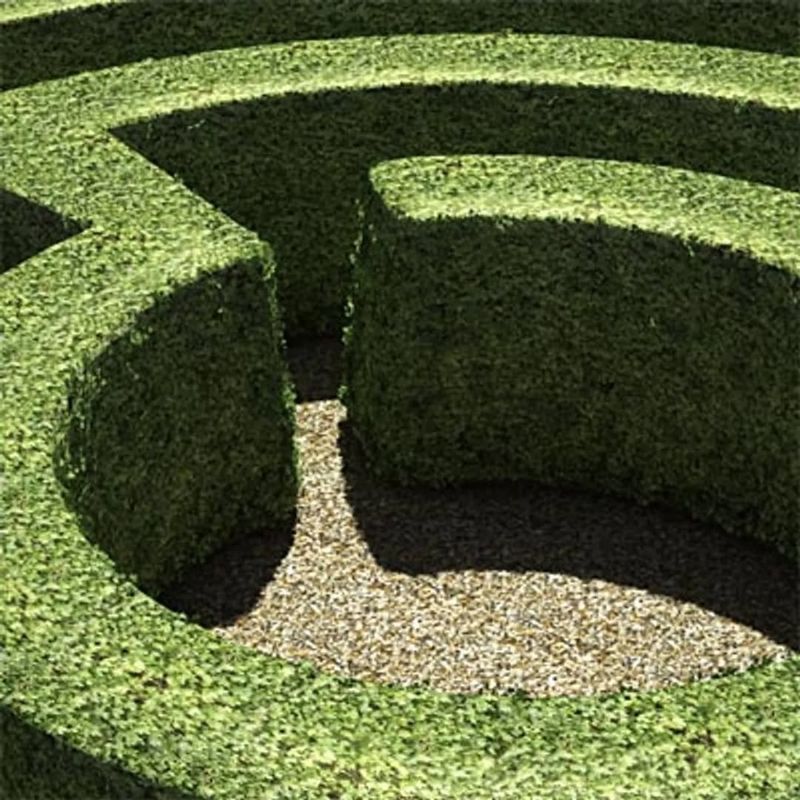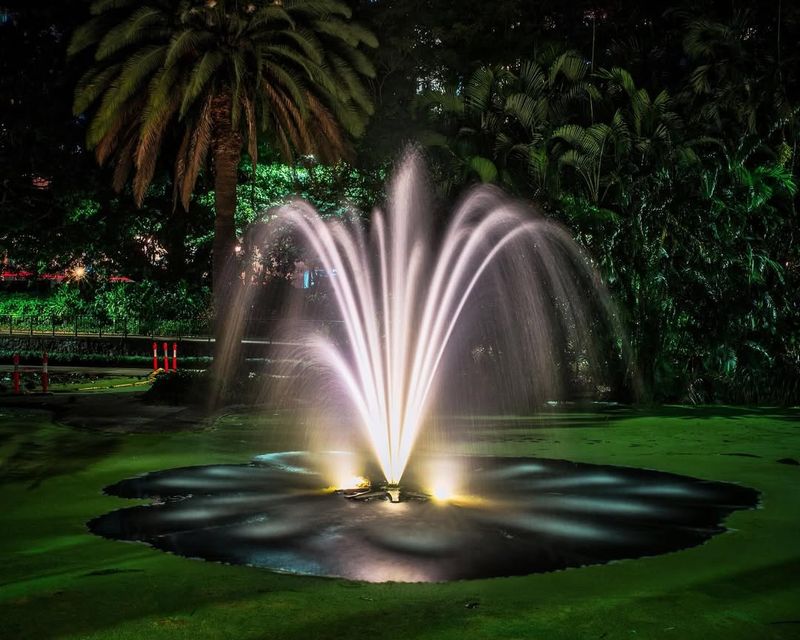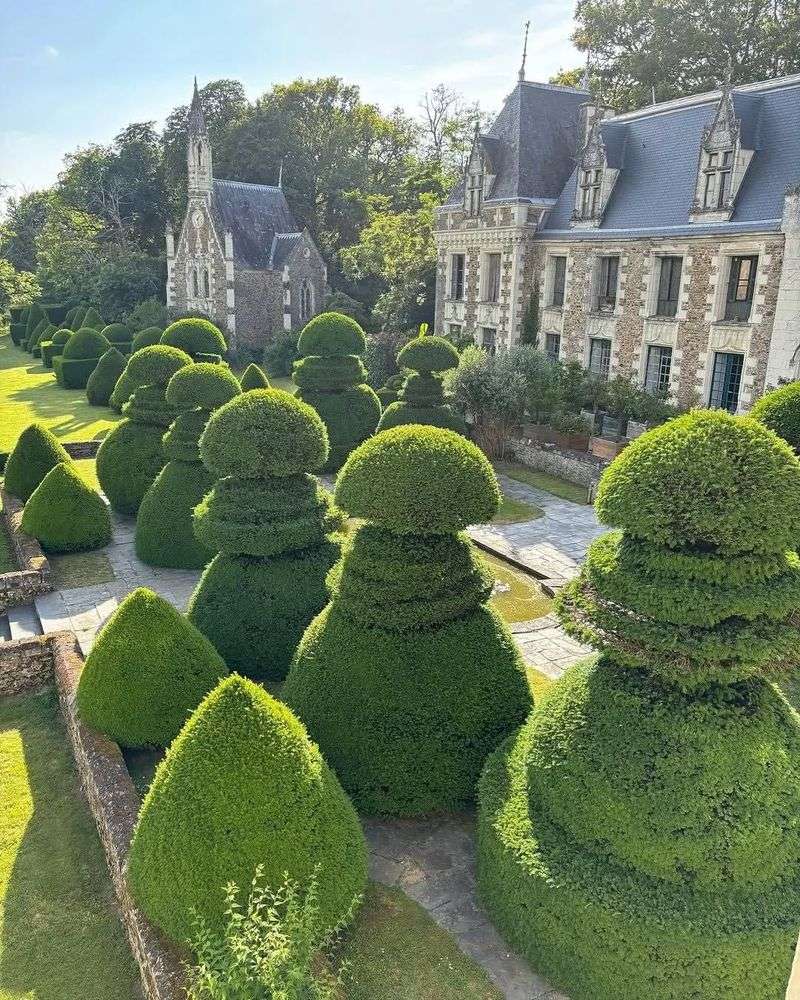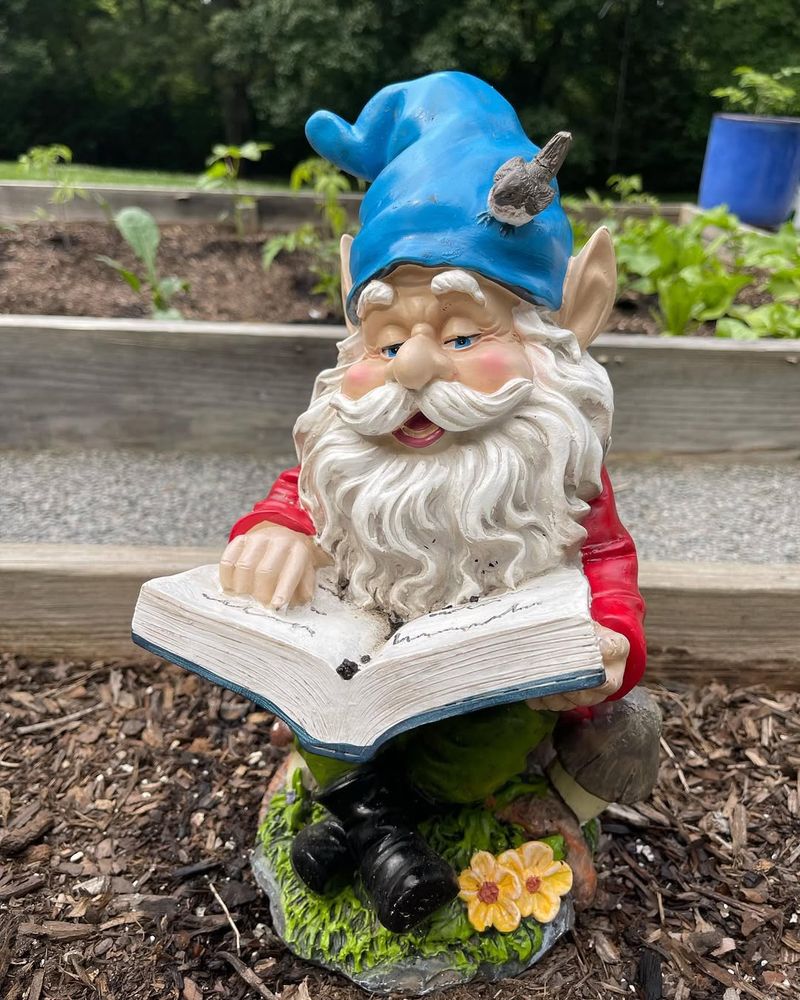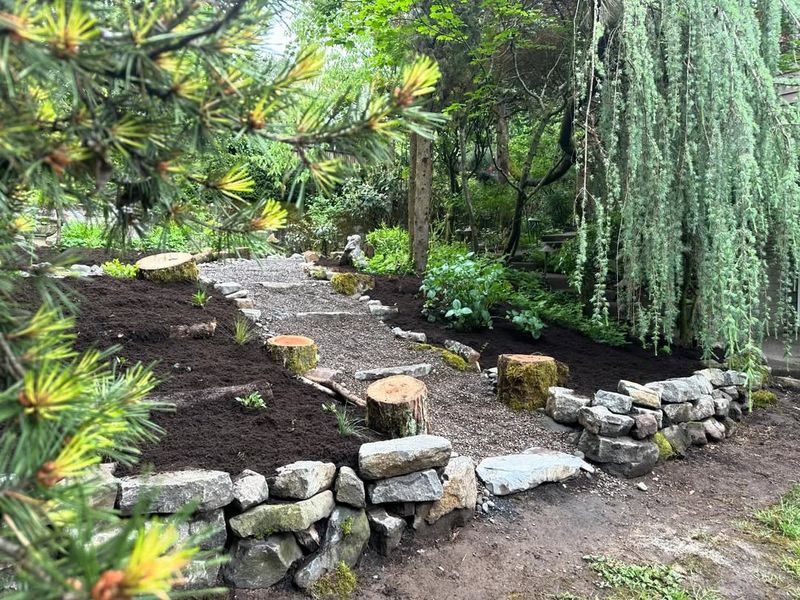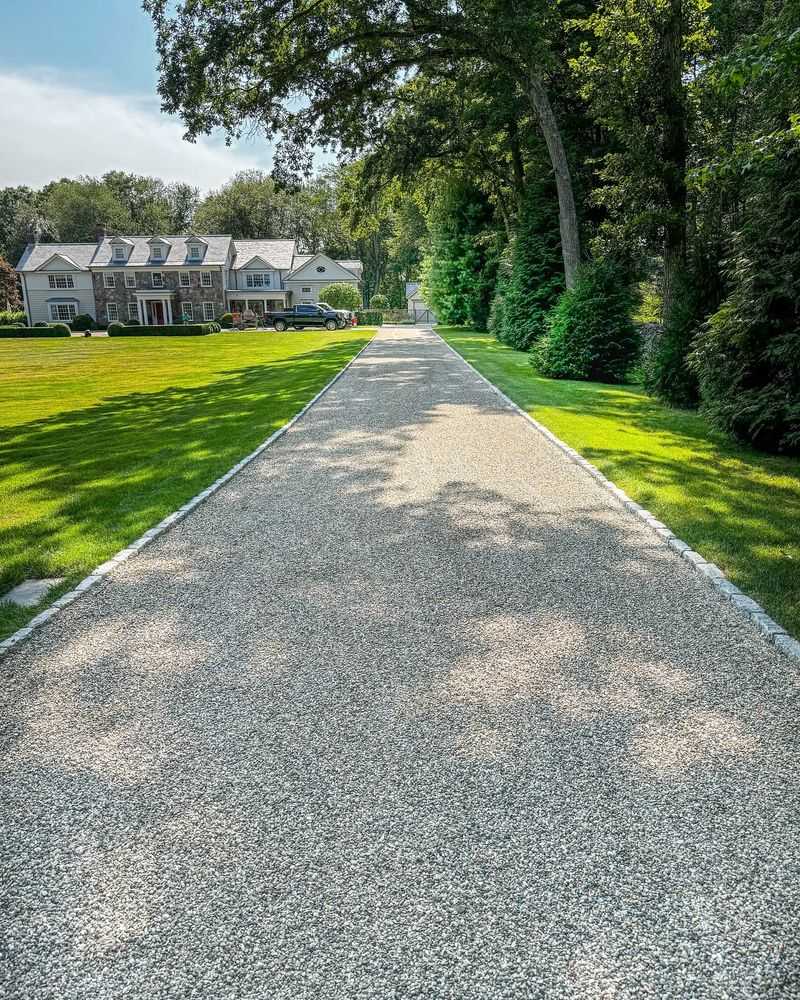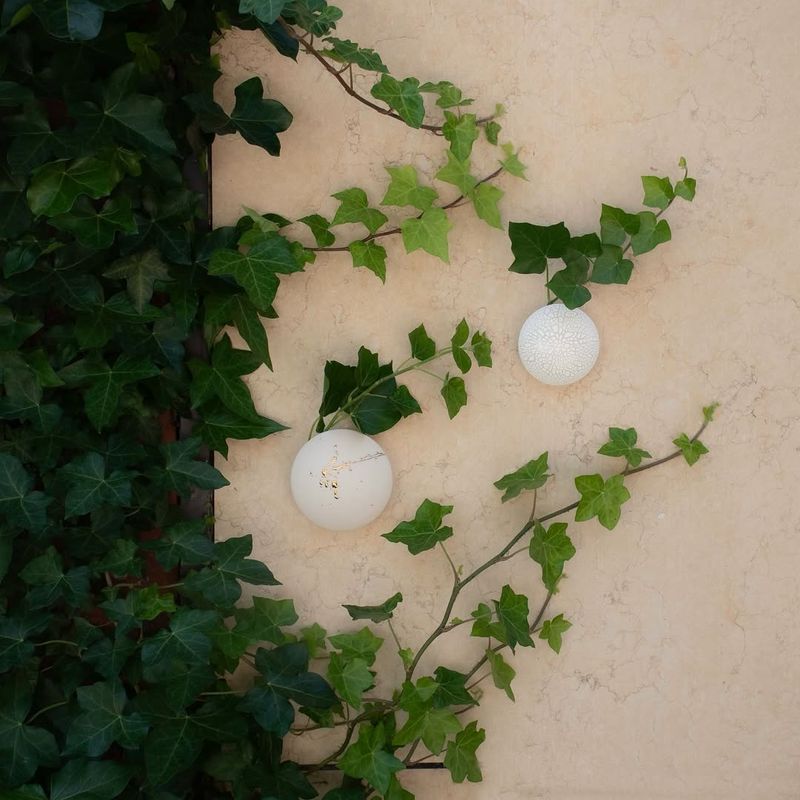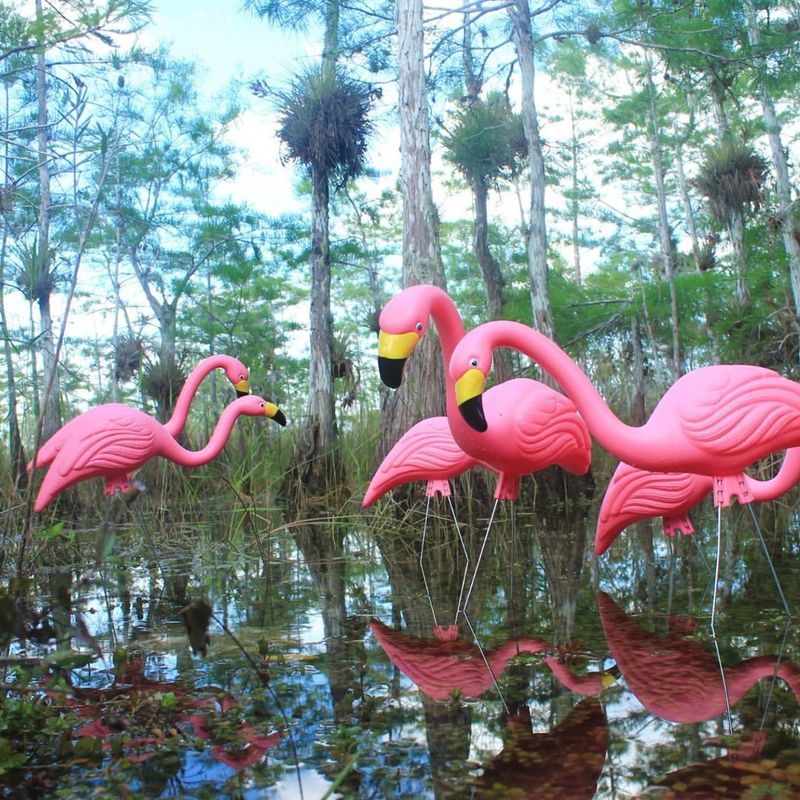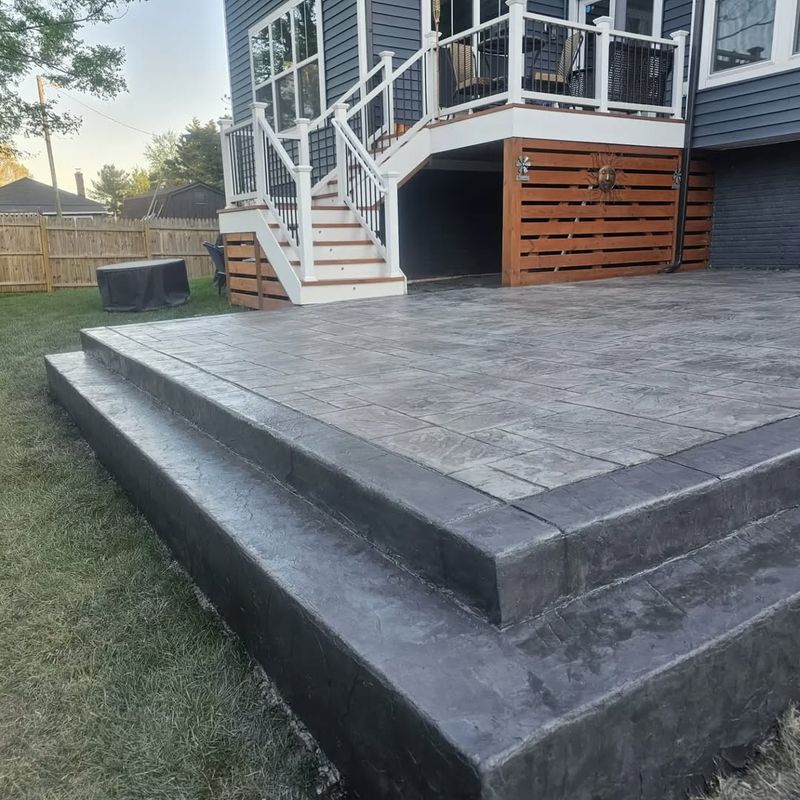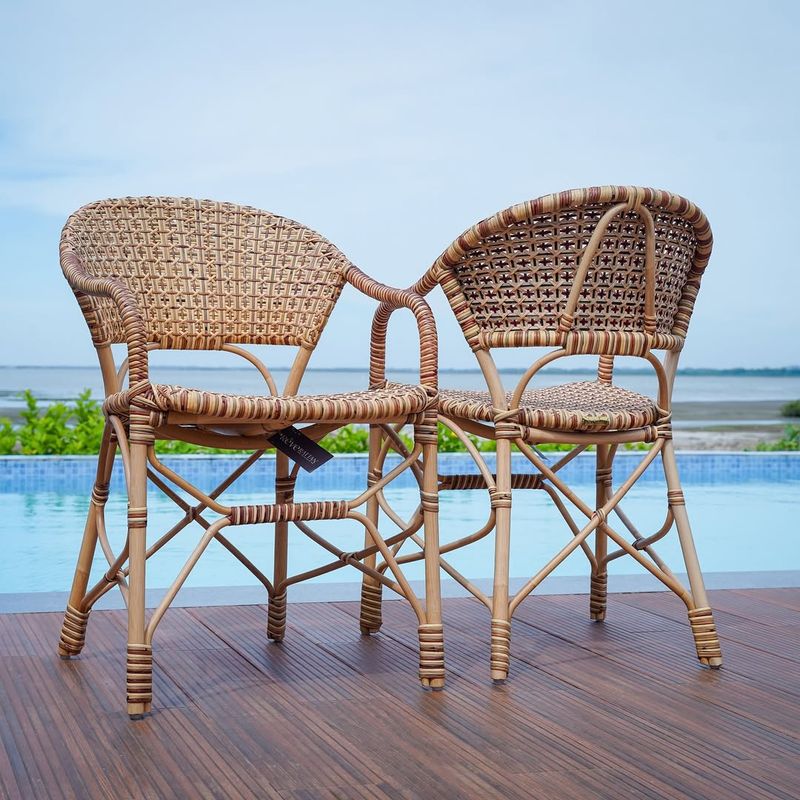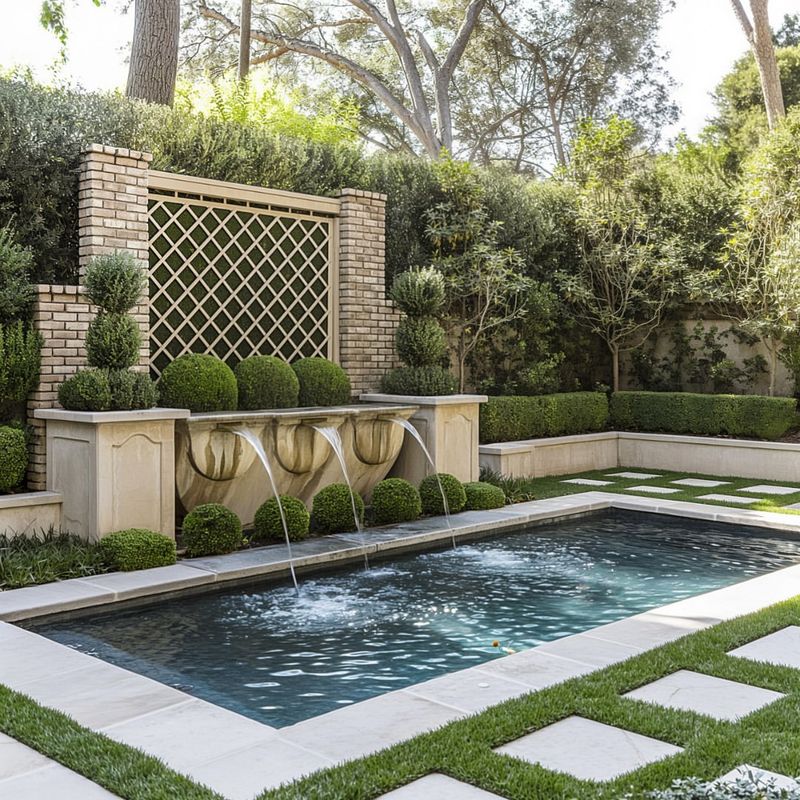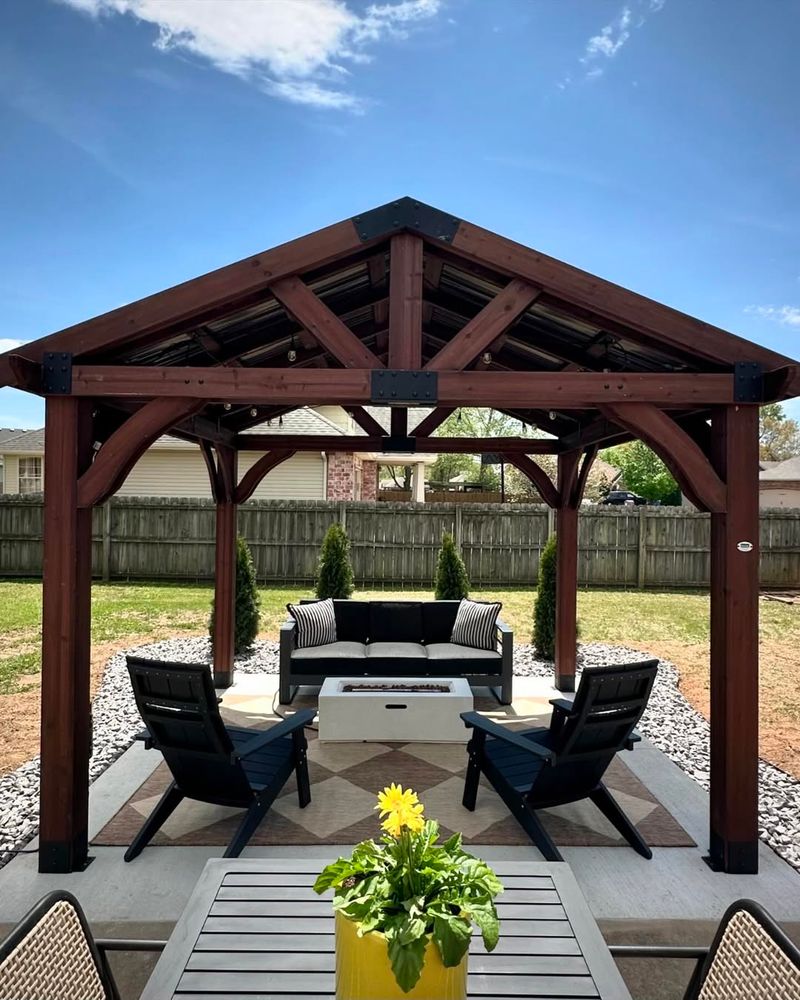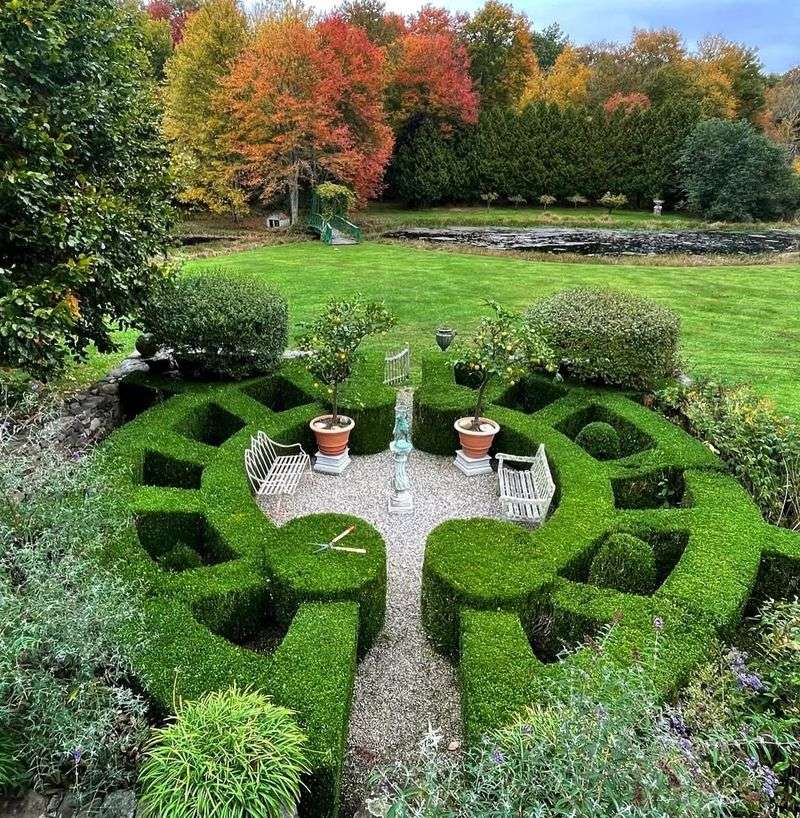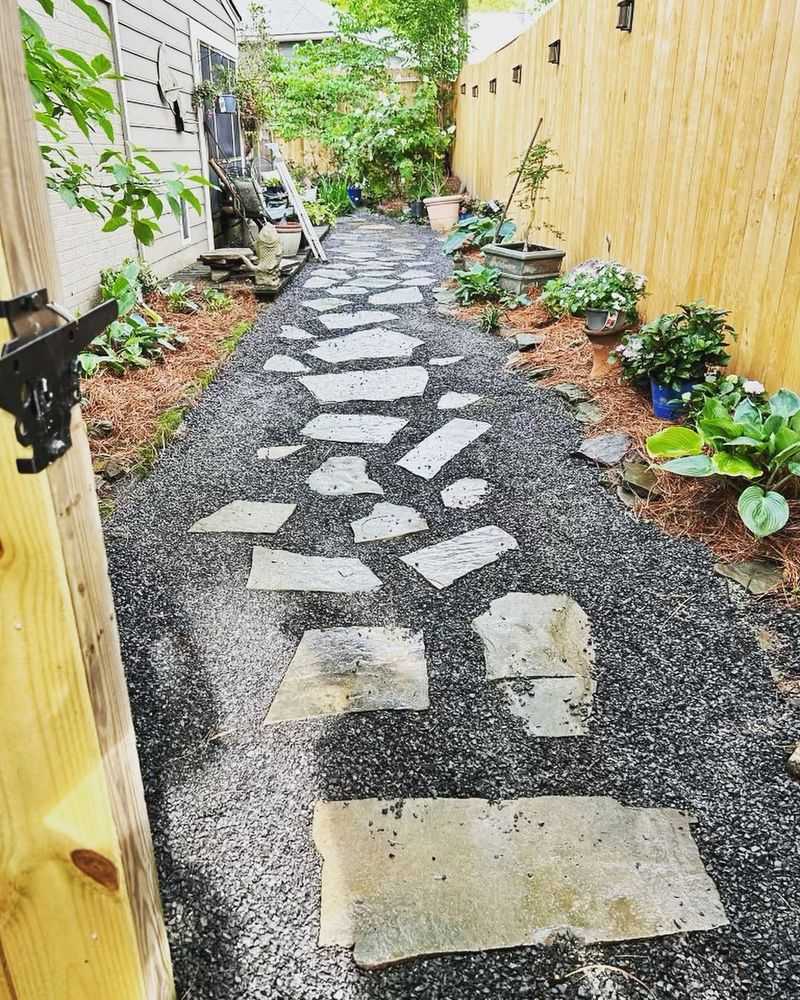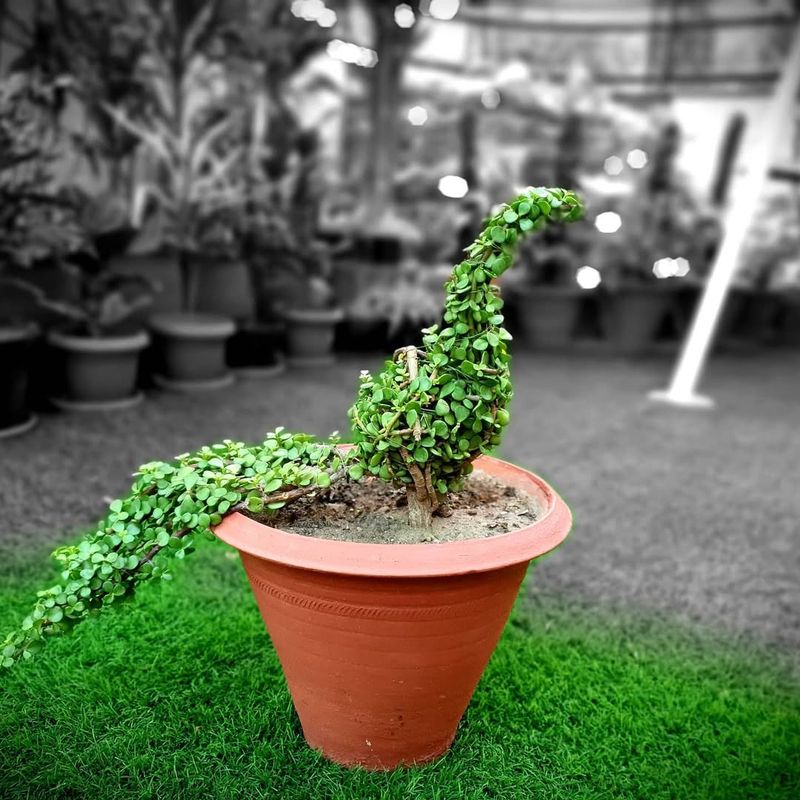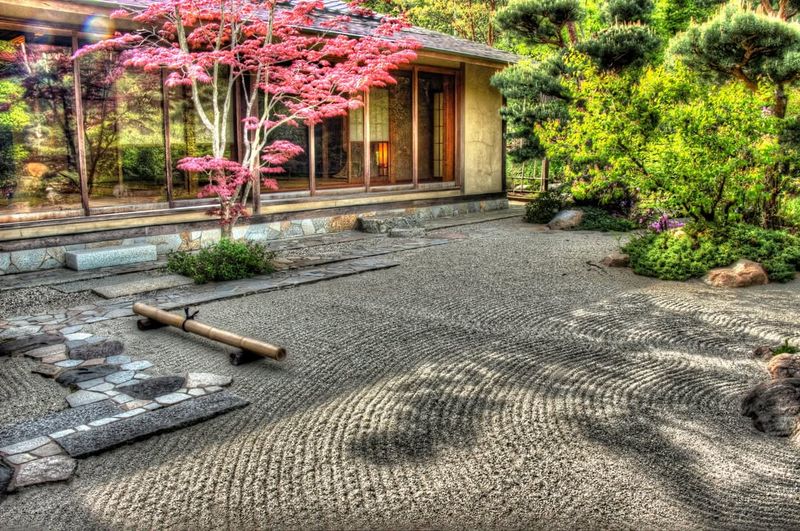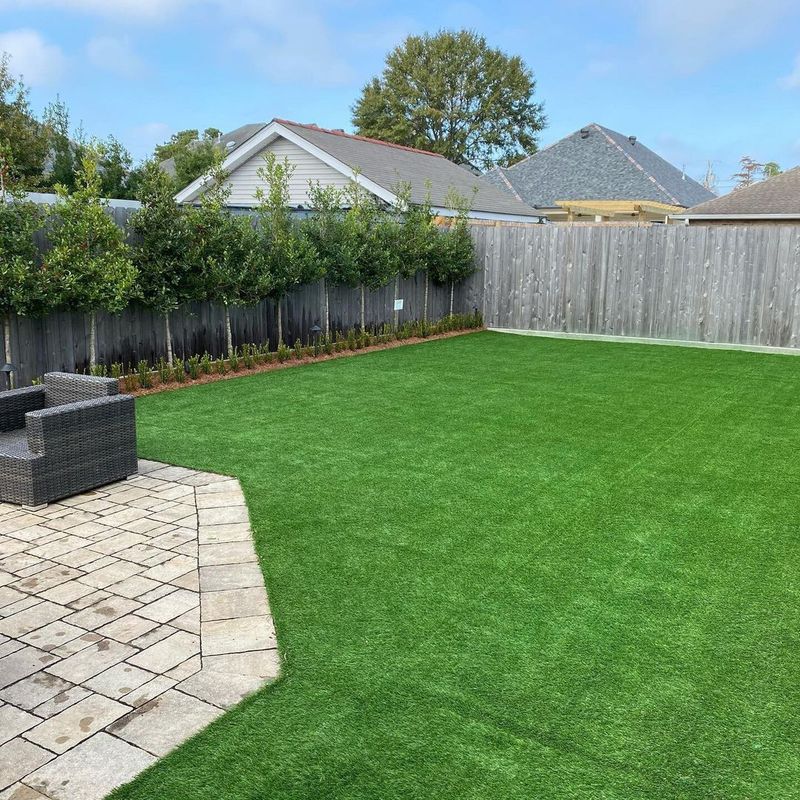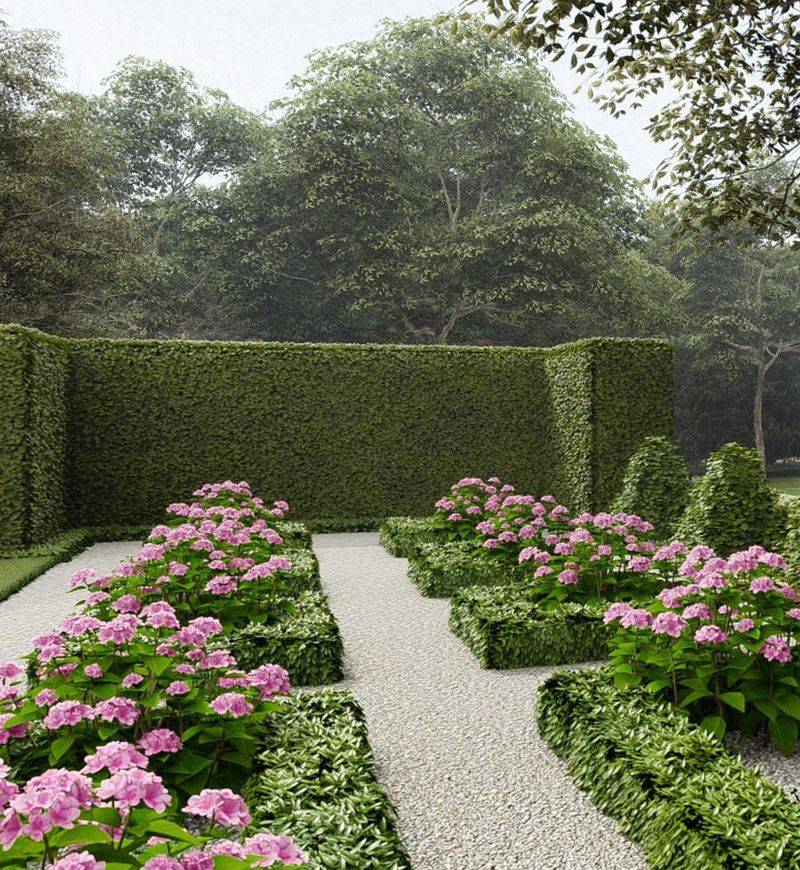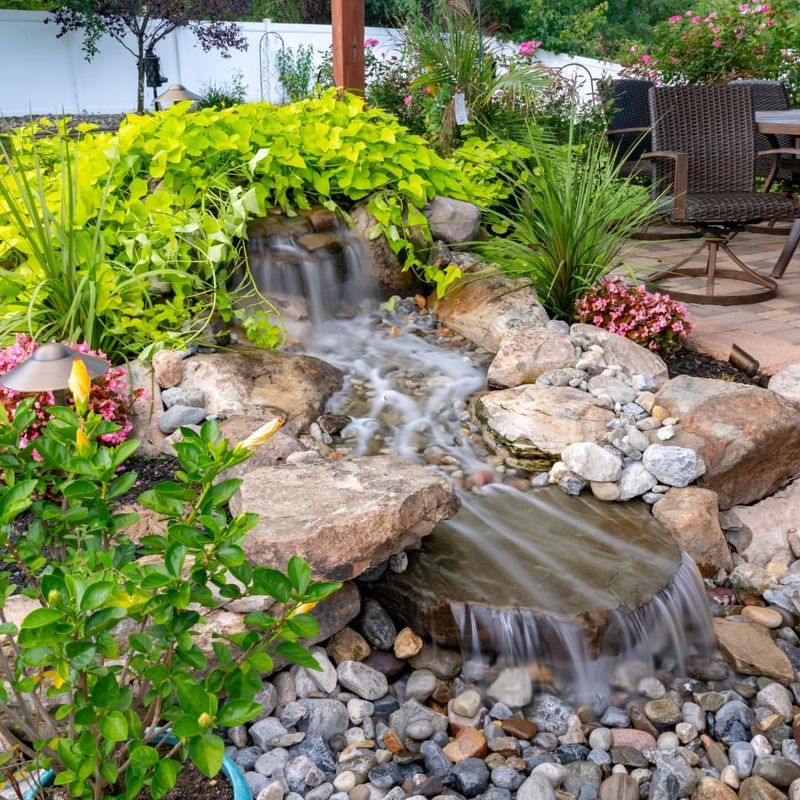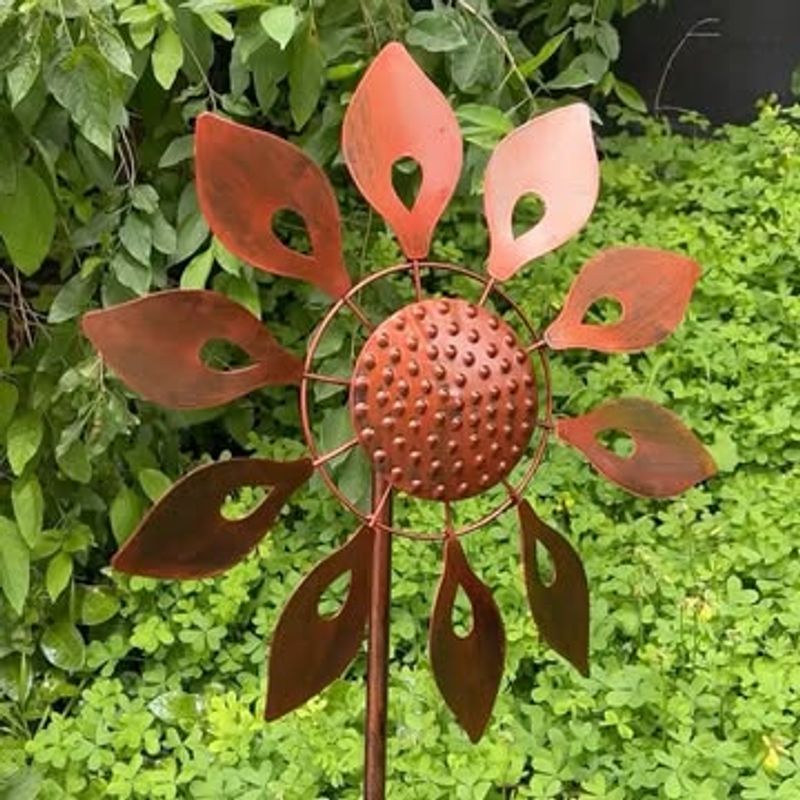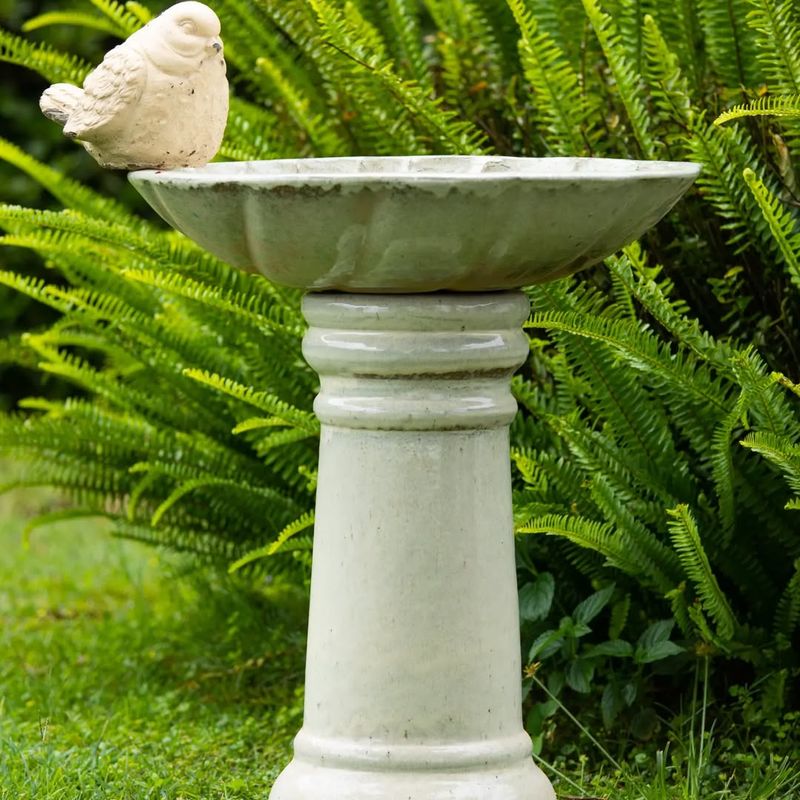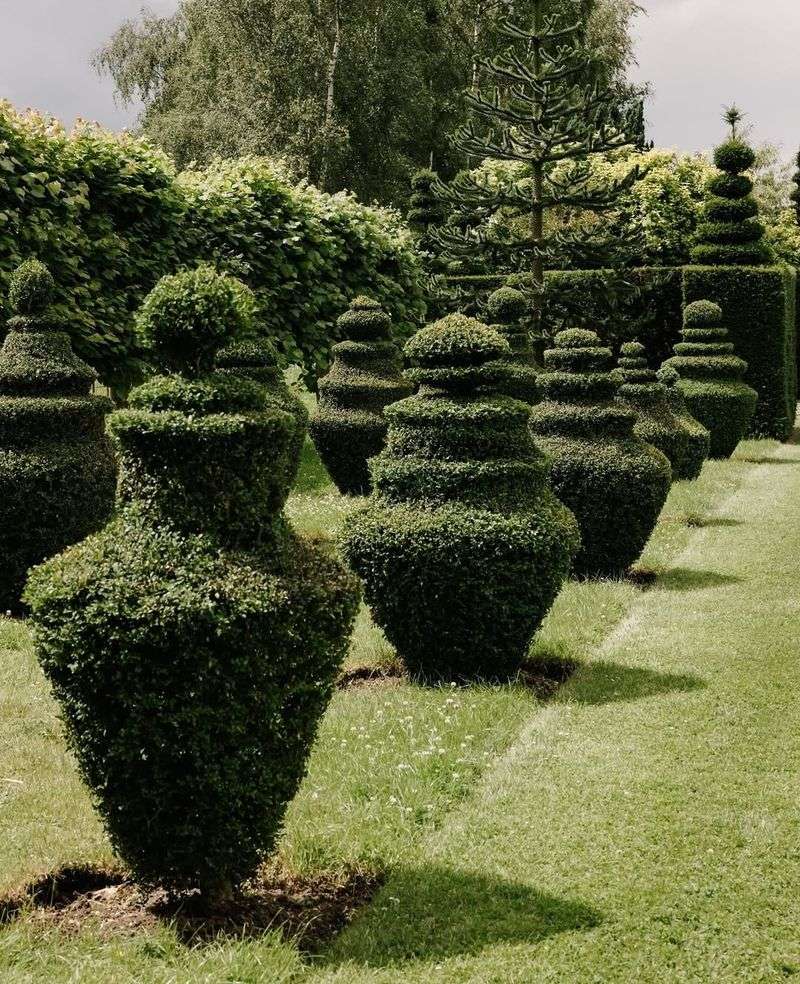Remember the days when everyone wanted that lush, green carpet of a lawn, or the perfectly pruned hedges like in a quaint English garden?
Times have changed and so have the trends in landscaping! As we strive for more sustainable and eco-friendly options, many of the old favorites are being replaced with innovative, earth-conscious ideas.
Join us as we explore 24 landscaping trends that were once the talk of the neighborhood but have now faded into the background.
1. Perfectly Manicured Lawns
Who doesn’t remember the age of perfectly manicured lawns, where every blade of grass stood at attention in a neat, precise pattern? Back then, lawn perfection was a symbol of status and care.
However, today, many homeowners are swapping the time-consuming, water-guzzling green carpets for more sustainable alternatives like drought-resistant grasses and native plants.
These new choices not only save water but also reduce the need for fertilizers and pesticides—making life easier for both the gardener and the environment.
2. Hedge Mazes
Ah, the mysterious allure of hedge mazes! Once a staple in grand gardens and stately homes, these living puzzles are now less common. While they create a sense of adventure and grandeur, maintenance is labor-intensive and costly.
The shift towards more natural landscapes has left these botanical labyrinths behind. Nowadays, gardeners are opting for wildflower meadows or open spaces that encourage biodiversity, leaving the maze as a charming relic of past horticultural pursuits.
3. Ornamental Fountains
Ornamental fountains once symbolized elegance and sophistication in garden design. Their gentle trickling sound was music to many a homeowner’s ears. Yet, as water conservation becomes more pressing, these extravagant water features are being retired.
Instead, dry riverbeds and rain gardens are taking their place, offering beauty without the environmental cost. It’s a move towards landscapes that celebrate resourcefulness and sustainability, leaving the fountains to grace only the grandest of estates.
4. Topiary Gardens
Remember when everyone wanted a topiary garden full of whimsical shapes and figures? These living sculptures once adorned many a front yard, showcasing gardeners’ patience and skill.
Today, the art of topiary has waned, considered too high-maintenance and time-consuming for the average homeowner. Instead, there’s a growing love for natural, unshaped plants that require less intervention and offer a more relaxed, organic aesthetic.
5. Garden Gnomes
Garden gnomes, those quirky little figures that once cheerfully guarded flower beds, have seen their popularity dwindle. Once considered the epitome of garden kitsch, they now often elicit a chuckle or two for their retro charm.
As garden design leans toward minimalism and natural beauty, these whimsical statues are quietly retiring. Homeowners are opting for more understated garden accents that blend seamlessly with nature, leaving gnomes to inhabit the pages of fairytales and nostalgic memories.
6. Rock Gardens
Once a hallmark of sophisticated landscape design, rock gardens are slowly becoming a thing of the past. The meticulous arrangement and selection of stones were once considered an art form.
However, the trend has shifted towards more lush, plant-focused designs that prioritize biodiversity and ecological value. While rock gardens offered unique beauty, their maintenance and limited planting options have made them less appealing to modern gardeners who crave vibrant, dynamic landscapes.
7. White Gravel Driveways
White gravel driveways were once the go-to for adding a touch of elegance to any home. Their clean lines and crisp appearance made them a popular choice. However, the practicality of these driveways has been questioned, as gravel can scatter easily and requires frequent replenishment.
Homeowners are now opting for more durable options like paved driveways or using environmentally friendly materials that offer the same aesthetic appeal without the hassle.
8. Invasive Ivy Walls
Ivy-clad walls, once the epitome of the English garden aesthetic, are now falling out of favor. While they exude an old-world charm and can lend a picturesque quality to any setting, the problems they cause, like damaging structures and hosting pests, outweigh their beauty.
Modern landscapers prefer using native climbing plants that offer similar visual appeal without the invasive nature, ensuring that garden walls remain both beautiful and safe.
9. Symmetrical Flower Beds
Once, symmetrical flower beds were the height of garden sophistication, offering a sense of order and balance. However, as gardening trends shift towards more natural and organic designs, this rigid symmetry is becoming outdated.
Gardeners are embracing asymmetry and diversity, creating dynamic, flowing gardens that mimic the spontaneity of nature. The result is a landscape that’s not only beautiful but also supports biodiversity and provides a habitat for local wildlife.
10. Plastic Flamingos
Plastic flamingos, once the darling of many suburban yards, are now considered a relic of the past. These rosy lawn ornaments were the embodiment of quirky, carefree style in the 1950s and ’60s.
Today, however, there’s a preference for more naturalistic garden decor that harmonizes with the environment. As ecological concerns rise, homeowners opt for elements that enhance their gardens’ natural beauty, leaving the flamingos to bask in retro kitsch glory.
11. Concrete Patios
Concrete patios were once the standard for backyard gatherings and barbecues. Their durability and simplicity made them a favorite. However, as outdoor living spaces become more stylish and integrated with nature, homeowners are moving towards materials like natural stone or composite decking.
These alternatives not only offer a more appealing aesthetic but also blend seamlessly with the surrounding landscape, creating inviting spaces that encourage relaxation and socializing.
12. Rattan Furniture
Remember lounging on rattan furniture as the sun set on a warm summer evening? While rattan was once synonymous with outdoor elegance, it’s now seen as a bit dated.
New materials like weather-resistant wicker or sleek metal are taking center stage, offering both durability and style. These modern options require less maintenance and provide a contemporary look, making them a preferred choice for today’s patios and gardens that blend comfort with chic design.
13. Chic Water Features
Stylish water features, once all the rage, are being replaced by more sustainable garden elements. The allure of trickling water has been tempered by the push towards water conservation and eco-friendly designs.
Gardeners are shifting towards elements that promote sustainability, such as rain barrels or drought-tolerant plants. These choices not only enhance garden aesthetics but also support environmental stewardship, ensuring that gardens can thrive even in times of water scarcity.
14. Wooden Gazebos
Wooden gazebos, once the crown jewel of garden elegance, are now being outshone by modern alternatives. While they provided a charming focal point and a shaded retreat, their upkeep and susceptibility to weathering have made them less appealing.
Today’s garden designers favor pergolas or metal structures that offer similar benefits with less maintenance. These contemporary options blend style with functionality, providing perfect spots for relaxation and enjoying the great outdoors.
15. Boxwood Parterres
Boxwood parterres, with their intricate designs and perfectly clipped hedges, once symbolized gardening mastery. However, the effort required to maintain these precise shapes has led many to seek more forgiving alternatives.
The trend is shifting towards looser, more natural plantings that require less labor and offer a wilder beauty. As gardeners embrace the untamed look, boxwood parterres are being replaced with spaces that encourage biodiversity and offer a relaxed charm.
16. Decorative Garden Paths
With their elaborate patterns and costly materials, ornate garden paths are losing favor in the modern landscape. While they added a touch of luxury, the upkeep and expense have prompted a shift towards simpler, more practical pathways.
Gardeners now prefer natural materials like gravel or bark chips that blend seamlessly with the environment, providing functionality without distracting from the garden’s natural beauty. It’s a path to simplicity and sustainability.
17. Peacock Topiaries
Peacock topiaries, once a symbol of horticultural artistry and flair, are now taking a backseat to more natural gardening trends. While they display impressive skill, the time and effort required to maintain these elaborate shapes have made them less practical for today’s busy gardeners.
As preferences shift towards low-maintenance, eco-friendly landscapes, the peacocks are stepping aside for gardens that celebrate the natural beauty of untamed plant life.
18. Zen Gardens
Their sparse nature and high maintenance have caused a decline in their popularity. Modern gardeners are favoring lush, vibrant plantings that enhance biodiversity and offer a more engaging and lively environment.
The move is towards spaces that not only provide tranquility but also support a healthy ecosystem and invite wildlife to thrive.
19. Synthetic Turf
Once hailed as the future of easy lawn care, synthetic turf is facing a decline in favor. While it offered a maintenance-free alternative to natural grass, concerns over environmental impact and aesthetic limitations have led homeowners to reconsider.
The focus is now on sustainable landscaping with drought-resistant plants and eco-friendly ground covers that offer the beauty of nature without the environmental cost. It’s a greener approach to creating lush outdoor spaces.
20. Formal Rose Gardens
Once the pinnacle of floral elegance, formal rose gardens are being replaced by more spontaneous plantings. While roses are still popular, the rigid structure and intensive care required by formal arrangements are losing appeal.
Gardeners are embracing wildflower mixes and native plantings that provide beauty with less effort. This trend supports biodiversity and offers a more natural aesthetic, inviting butterflies and bees to enjoy the garden alongside human visitors.
21. Tiered Waterfalls
Tiered waterfalls are being rethought in the quest for sustainability. While they provide stunning visuals and soothing sounds, their water usage and maintenance can be burdensome.
Today’s gardeners are moving towards features that conserve resources, like rain gardens or dry creek beds, which offer aesthetic appeal without the environmental footprint. It’s a cascading change towards eco-friendlier landscapes that embrace nature’s simplicity.
22. Metal Garden Ornaments
Metal garden ornaments, with their artistic flair and durability, used to add character to gardens. However, as tastes shift towards more organic and sustainable decor, these once-prized pieces are being phased out.
Homeowners now seek natural elements like driftwood or stones that blend seamlessly with their surroundings, reflecting a growing appreciation for the natural world. This transition marks a move towards garden accents that are both eco-friendly and aesthetically pleasing.
23. Decorative Birdbaths
Decorative birdbaths, once beloved for attracting avian visitors, are seeing a decline as gardens become more wildlife-friendly. While their aesthetic appeal remains, modern garden design encourages natural water sources like ponds or shallow basins that support a variety of wildlife.
These alternatives offer greater ecological benefits, fostering natural habitats that draw birds, insects, and other creatures, creating a vibrant and thriving garden ecosystem. It’s a splash of change for a better environment.
24. Sculpted Hedges
Sculpted hedges, with their intricate designs and manicured precision, were once the pride of many gardeners. However, the laborious upkeep and desire for more organic landscapes have shifted tastes.
Today, gardeners favor naturalistic plantings that celebrate the beauty of untamed growth. This approach not only reduces maintenance but also enhances biodiversity, creating gardens that are both beautiful and ecologically balanced. It’s a cut above the old ways, embracing nature’s wild splendor.

